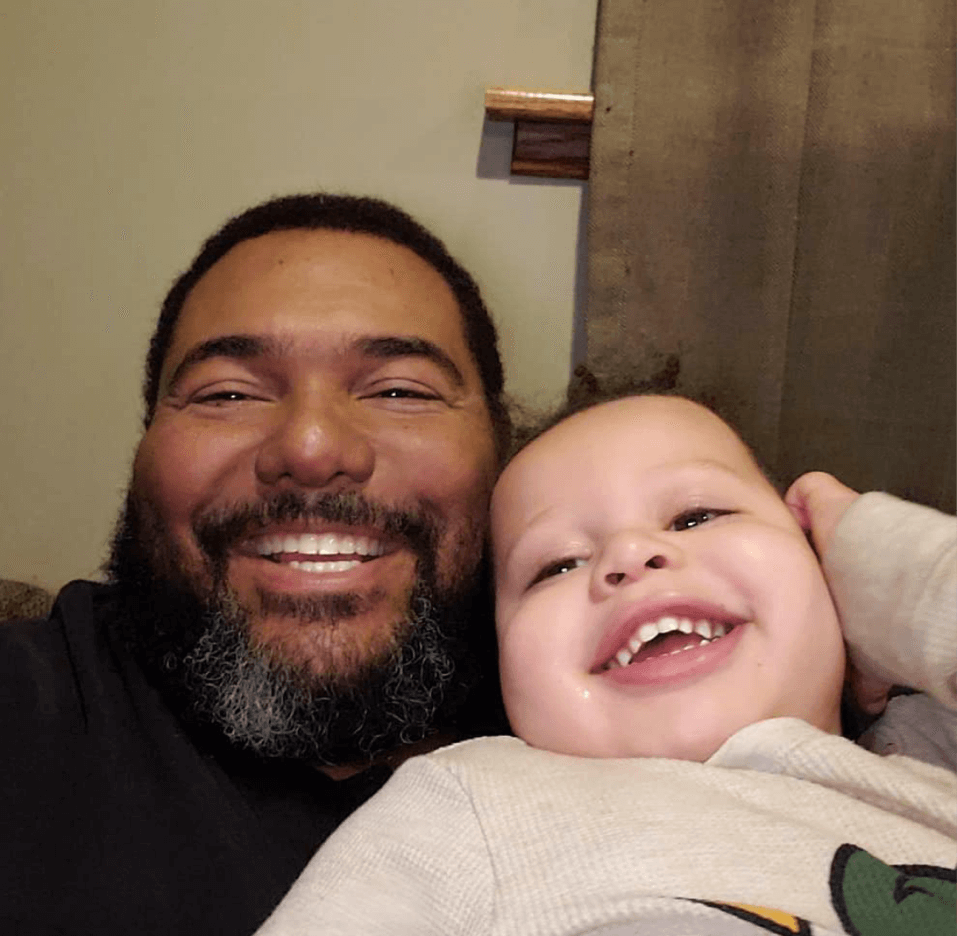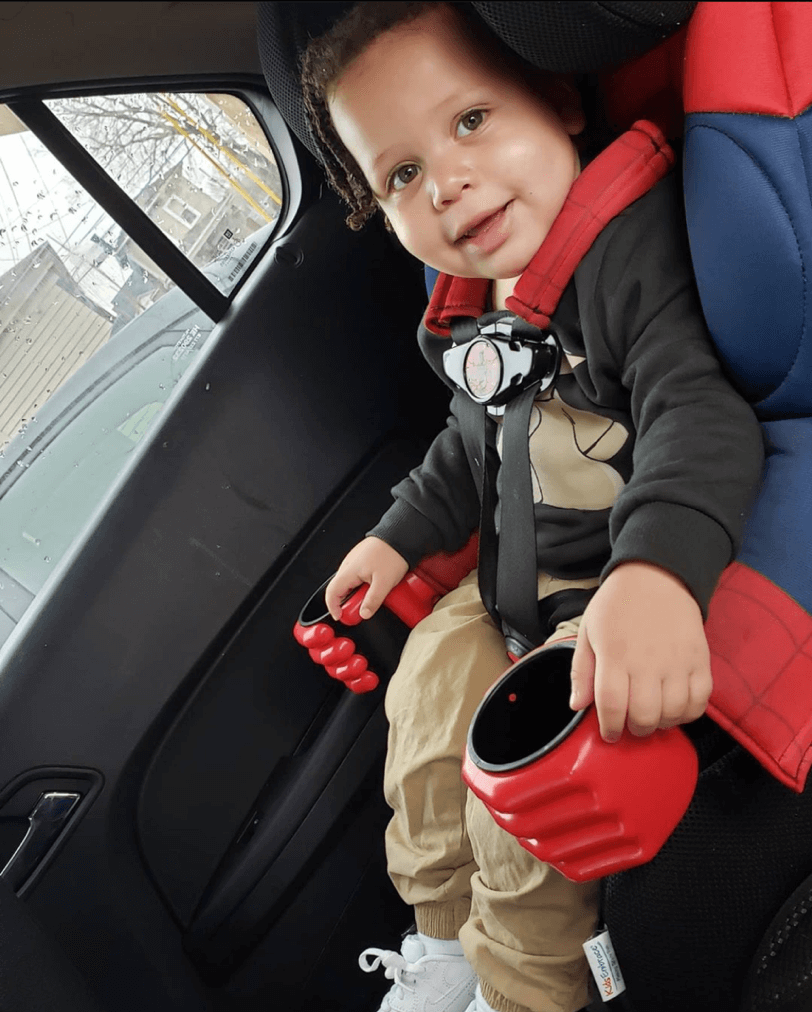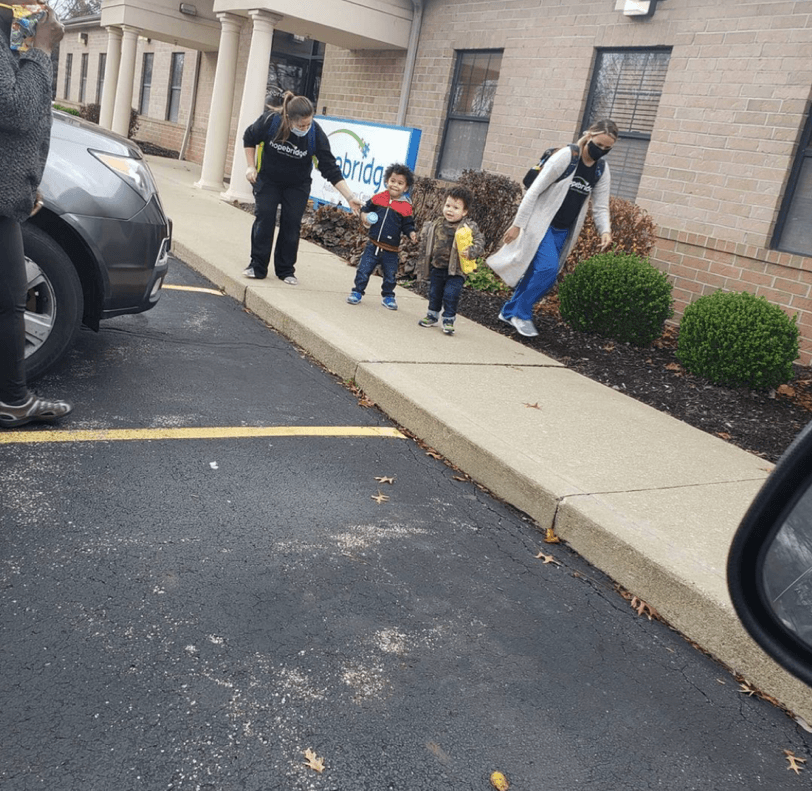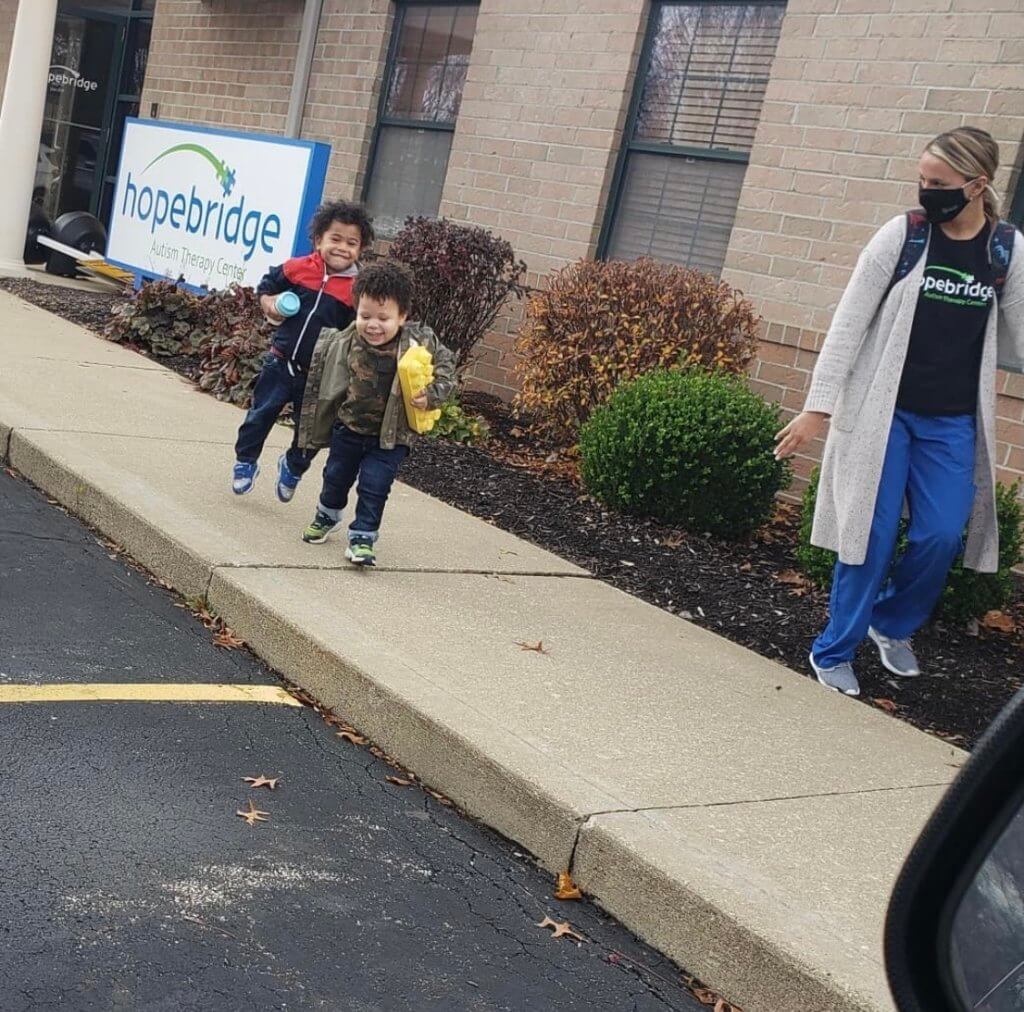Autism and Friendship: How ABA Therapy Helped Parker Make New Friends
April 02, 2021
April 02, 2021

Winnie and Piglet. Elmo and Abby. Buzz and Woody. Harry, Hermione and Ron. Ariel and Flounder. Monica and Rachel. What do all these iconic duos – and trios – have in common? A friendship like no other.
For many parents of children with autism, true friendship for their kids (and often, themselves) might seem like a distant dream. We are here to tell you it is not only possible, it is likely, especially if these kiddos get the extra care and support they need to cultivate their social skills.
Like the pairs of BFFs we mentioned earlier, however, it’s important to remember that each friendship is unique. The way autistic children play and bond may seem different to others who are neurotypical, but that does not make it any less special or meaningful to those involved.
At Hopebridge centers across the nation, from Colorado to Georgia, we see it every day. Our team members’ faces light up when they see kids run to each other for a high five or game of tag each day. We recently spoke to the mom and dad of 3-year-old Parker about his experiences making friends while attending Hopebridge Autism Therapy Center in Akron, Ohio.
Parker is a funny, spunky, wild and sometimes ornery kid, according to his parents, Meloneka and Luis. He loves Halloween, skeletons, ATVs, motorcycles and “danger.” He has fun playing pranks and enjoys dressing in costume … then checking himself out in the mirror, of course!

Prior to joining Hopebridge at 20 months old, Parker was completely nonverbal. His parents shared that he did not seem to understand if someone told him to do something. When he attended other early intervention services, he would engage a little, but then would go back into his room and refuse to come out.
Meloneka and Luis told us Parker’s first couple months at Hopebridge were not easy, but they were worth it. He has challenges with transitions, so he started out crying, kicking, screaming and sometimes, even throwing up, when he arrived at the center. When the pandemic first hit, there was another hiccup, as the center temporarily closed for a few weeks, but soon after it re-opened, something seemed to change for Parker. His mom and dad told us he began to love attending therapy.
Since attending applied behavior analysis (ABA therapy) at Hopebridge, he has blossomed in more ways than one. His speech has exploded with two- and three-word phrases and receptive language, with expressive language not too far behind. He now imitates his therapists when he is with his parents, and will choose books to “read” to them. When he recently attended a session to develop his IEP, he grabbed one of the teacher’s hands and told her to “come on.” His social skills continue to grow.
What else has all of these newfound skills led to? New friends! While making friends seems to come more naturally to some than others, there are skills involved that many do not realize. From communication to peer play, ABA and other complementary services can help children grow in these areas needed to create relationships.







Parker has become a social butterfly who gets along with everyone. His friends include his Board Certified Behavior Analyst (BCBA), Abby, and many of the Registered Behavior Technicians (RBT), like Rachel, Alisha and Stephen.
“The therapists have become his real friends. He definitely loves Abby, but he has his own little bond with them all,” said Meloneka.
While Parker’s parents are happy that he adores his therapy team, the real fun is in watching him interact with his peers.
One of Parker’s best friends is another boy he previously shared a therapy room with in the center.
“These two started therapy around the same time and have been best friends ever since. Whenever we drive up to the center and he sees his friend’s car, he always calls out his name,” said Meloneka. “They like to hold hands when they leave the center at the end of the day, too. They sometimes bicker as kids often do, but they are still good friends.”
Not only have the two become close, but their moms enjoy chatting outside the center, as well. They had planned to set up playdates outside of therapy, but due to the pandemic, have not been able to meet up, just yet.




In addition to his “bestie,” Parker is forming bonds with other kids, as well. His parents tell us he seems to gravitate toward other kids who are nonverbal, including a girl in his center who he is helping to open up and engage with, as well as his younger cousin.
“We noticed Parker has become close to his cousin, who is nonverbal,” said Luis. “He loves him. Parker’s interactions with him have even gotten him mumbling and expressing himself more often.”
It is exciting for Parker’s parents and his therapy team to watch how ABA has helped him facilitate these friendships, in addition to his development of other skills.
“He is learning how to make friends and best of all, he can be himself at Hopebridge,” said Meloneka. “We don’t have to worry about him there. It is also encouraging to know that he is able to make other friends on the spectrum who are more like him.”
If you want your child to have the freedom to be himself or herself, while also developing the skills that will help them create more meaningful relationships, Hopebridge can help. Through a program of interdisciplinary services like ABA therapy, occupational therapy and speech therapy, we can assist your kiddo in creating magical moments that will last in their memories – and their parents’ – for a lifetime. To start your child in a program that will help them build communication and social skills, fill out our quick and easy online form.
*Informed consent was obtained from the participants in this article. This information should not be captured and reused without express permission from Hopebridge, LLC. Testimonials are solicited as part of an open casting call process for testimonials from former client caregivers. Hopebridge does not permit clinical employees to solicit or use testimonials about therapeutic services received from current clients (Ethics Code for Behavior Analysts 5.07-5.08; BACB, 2020). Hopebridge does not provide any incentives, compensation, or renumeration for testimonials provided by a former client or client caregiver.